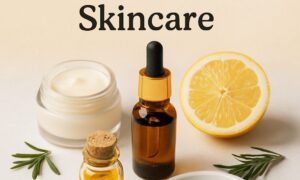In today’s world, many people are becoming more aware of the chemicals hidden in everyday products, including perfumes. Conventional perfumes often contain synthetic fragrances, alcohol, and other potentially harmful ingredients that can irritate the skin or cause allergic reactions. If you want to smell wonderful while avoiding toxins, making your own natural perfume at home is a fantastic and rewarding option. Not only do you get full control over the ingredients, but you can also customize your scent to perfectly reflect your personality and mood.
Why Choose Natural Perfume?
Natural perfumes are made from essential oils, botanical extracts, and natural carriers, which means they’re free from synthetic chemicals and harsh additives. This makes them gentler on the skin and environmentally friendly. Many essential oils offer therapeutic benefits as well, such as relaxation, mood boosting, or invigorating effects, so wearing a natural perfume can be a form of aromatherapy throughout your day.
Ingredients You’ll Need
Creating your own perfume requires only a few simple ingredients:
- Essential Oils: These are the core scents and can be combined to create a unique fragrance blend. Popular essential oils for perfumes include lavender, rose, jasmine, sandalwood, vanilla, bergamot, ylang-ylang, and patchouli.
- Carrier Oil: Since essential oils are highly concentrated, they need to be diluted with a carrier oil like jojoba, sweet almond, or fractionated coconut oil to be safe for skin application.
- Alcohol (Optional): Some natural perfumes use a high-proof alcohol like vodka as a base, which helps the scent last longer and evaporates quickly after application. However, you can skip alcohol if you prefer an oil-based perfume.
- Distilled Water or Witch Hazel (Optional): These can be added to lighten the scent or create a sprayable perfume.
How to Blend Your Natural Perfume
Natural perfume making is about balancing three fragrance notes:
- Top Notes: These are the first scents you smell and usually evaporate quickly. Examples include citrus oils like lemon, grapefruit, and bergamot.
- Middle Notes (Heart): These form the core of your perfume and last longer. Floral scents like lavender, rose, and geranium fit here.
- Base Notes: These provide depth and staying power to your perfume. Think of woody or spicy scents such as sandalwood, patchouli, vanilla, and cedarwood.
A good ratio to start with is 30% top notes, 50% middle notes, and 20% base notes.
Step-by-Step Guide to Making Natural Perfume
Step 1: Choose Your Essential Oils
Select oils you love and want to combine. For beginners, try three or four oils to create a balanced scent. For example, bergamot (top), lavender (middle), and sandalwood (base).
Step 2: Mix Your Oils
In a small glass bottle or vial, combine about 15-20 drops of essential oils following your desired ratio.
Step 3: Add Carrier Oil or Alcohol
Add approximately 10 ml of carrier oil if making an oil-based perfume, or 10 ml of vodka if making an alcohol-based one.
Step 4: Let It Mature
Seal the bottle and store it in a cool, dark place for 48 hours to 6 weeks. The scent will mature and blend better over time.
Step 5: Dilute if Needed
If the scent is too strong, dilute with more carrier oil or distilled water.
Step 6: Transfer to a Perfume Bottle
Use a small rollerball or spray bottle for easy application.
Tips for Crafting Your Signature Scent
- Experiment: Don’t be afraid to try different combinations until you find what suits you best.
- Start Small: Make small batches to test scents before making a larger amount.
- Keep Notes: Record your recipes and the proportions so you can recreate your favorite blends.
- Use Quality Ingredients: Organic and pure essential oils provide the best scent and therapeutic benefits.
- Safety First: Always perform a patch test on your skin before using a new perfume to check for allergies.
Benefits of Wearing Natural Perfume
Besides avoiding synthetic chemicals, natural perfumes can provide subtle aromatherapy benefits. Lavender can relax and reduce stress, citrus oils can uplift your mood, and sandalwood may promote calmness and focus. Plus, making your own perfume allows you to express your creativity and craft a scent that’s uniquely yours.
Storage and Shelf Life
Keep your natural perfume in a dark glass bottle to protect it from light and preserve its quality. Store it in a cool place away from direct sunlight and heat. Oil-based perfumes typically last about six months to a year, while alcohol-based perfumes may last longer due to the preservative effect of alcohol.






















